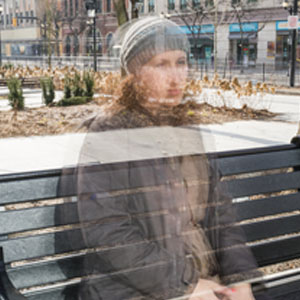
Call for more information and costs or if you are enquiring for yourself or a family member you can use our online cost guide for individuals.
Our Experts' blog
Each month we focus on a specialist area of occupational therapy and invite one of our experts within that field to share their knowledge and insights.
Remote Services: Enabling responsiveness and the difference it makes to children and their families

Jane is an OT Practice Occupational Therapist working with children and adults, who has helped develop and refine our service for the remote delivery of therapy. Here Jane gives us some insights on how to achieve a successful outcome from remote intervention and in particular how it enables therapist to be more responsive.
Summer feature: Our top holiday tips for clients with additional needs

Holidays can be a logistical challenge. Read our guide on our top holiday tips for wheelchair users or those with additional needs. We've included considerations for travelling abroad as well as some UK based travel ideas.
Advances in Neurological OT

The last decade has seen some exciting advances in neurological occupational therapy practice. Focusing on two approaches to upper-limb rehabilitation, find out more about Mirror Therapy and Constraint-Induced Movement Therapy and the significant benefits to clients.
Achievable Fatigue Management Techniques

Fatigue is something that is part of most of our client’s rehabilitation journeys. OT's work with clients to break down tasks & build strategic rehabilitation programmes whilst managing the need for rest & recuperation allowing clients to realise their goals & stretch their capabilities.
Mental and Physical Health: Why they go hand in hand.

Four million people develop mental health problems after a long term physical disability. A holistic approach encompassing both physical & mental health is an essential ingredient in client led rehabilitation. This article explores their important relationship & the impact on therapeutic success.
The role of Alexa in clinical practice

There has been a significant growth in the mainstreaming of assistive technology over the last decade which has great advantages to the health care sector. More funding has gone into research and product development of this field, which has meant the selection of products on the market has grown whilst reducing the price of these devices. Find out more on how smart speakers such as Amazon's Alexa can aid clinical practice.
A Professional’s Guide to Sensory Impairment

This is the first article in our new series of CPD insights. Read this professional's guide on sensory impairment to learn more about the functional impacts and strategies to avoid clients becoming invisible.
How and when to source a children’s Occupational Therapist

Paediatric occupational therapy is a specialism of the profession where the OT is able to assess and treat the physical, mental and cognitive aspects of a child’s development. They look at the whole child to facilitate and support them and their family to achieve maximum independence and access the opportunities within the world around them.
A professional’s guide to paediatric spinal injury

An OT can support a child that has experienced a spinal injury in all stages of their rehabilitation journey. This guide gives an overview of how Occupational Therapists can provide holistic assessments, treatments and advice to maximise independence and quality of life.
FAQ’s for professionals - paediatric spinal injuries
Spinal injuries can lead to a variety of difficulties for children ranging from mobility to respiratory issues. In this FAQ our expert author explores what a spinal injury can involve for a child and their family, and how an Occupational Therapist can assist with rehabilitation programmes.
